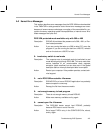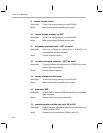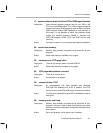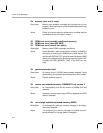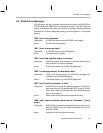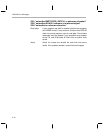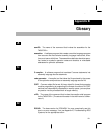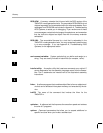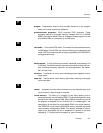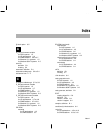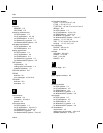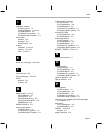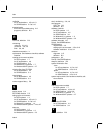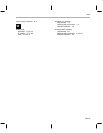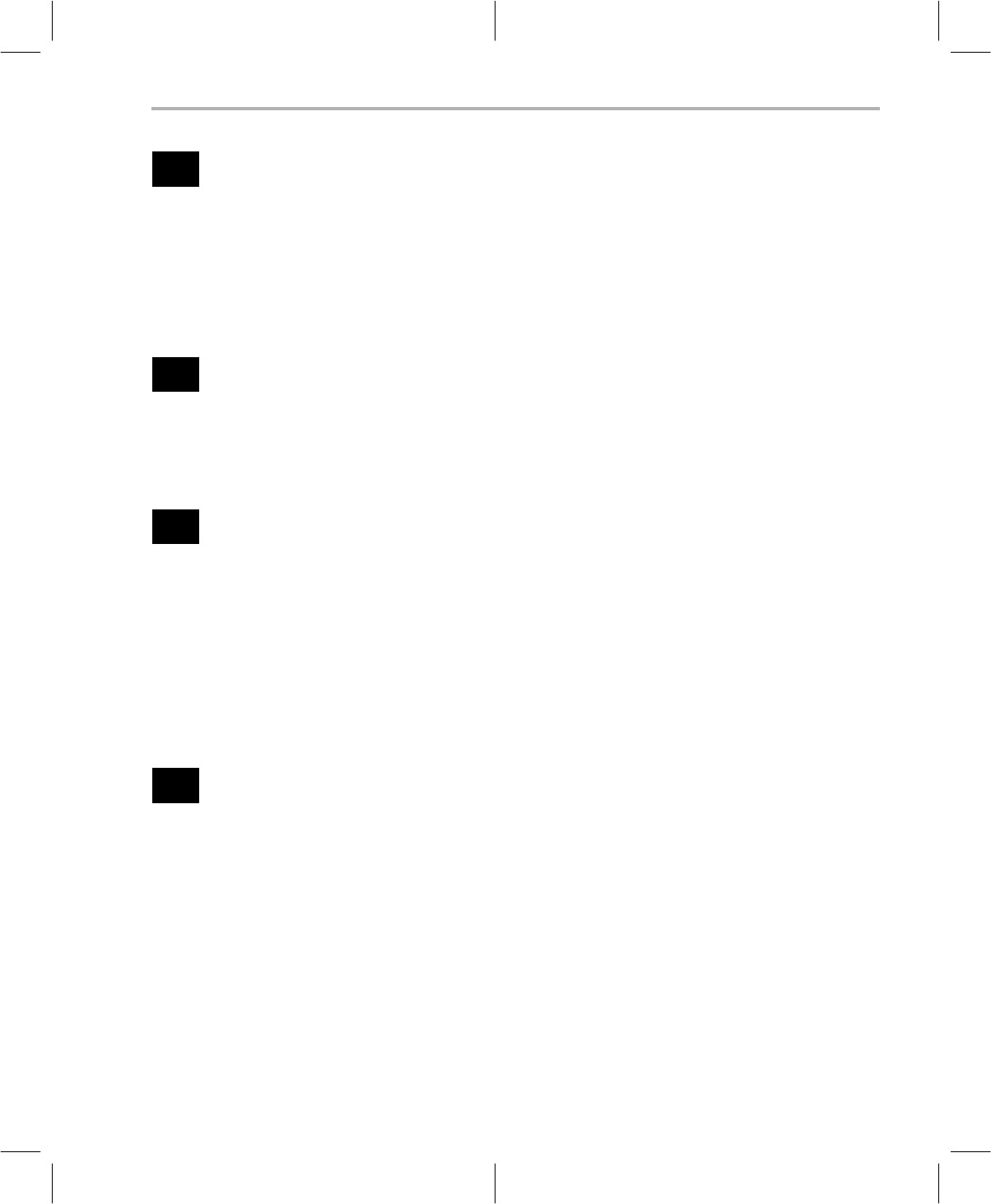
Glossary
B-3
Glossary
P
pragma: Preprocessor directive that provides directions to the compiler
about how to treat a particular statement.
protected-mode programs: 32-bit extended DOS programs. These
programs require an extended memory manager and run on 80386,
80486, and Pentium based PCs only. Protected-mode programs can use
all available RAM on a computer up to 64M bytes.
R
real-mode: 16-bit native DOS mode. This mode limits the available memory
to 640K bytes. Calls to DOS may involve switching from protected to real
mode.
DOS real-mode tools are no longer supported by the TMS470R1x
code generation tools.
S
shell program: A utility that lets you compile, assemble, and optionally link
in one step. The shell runs one or more source modules through the com-
piler (including the parser, optimizer, and code generator), the assem-
bler, and the linker.
structure: A collection of one or more variables grouped together under a
single name.
swap file: The file where virtual memory (secondary memory) is allocated
on the hard disk.
V
veneer: A sequence of instructions that serves as an alternate entry point
into a routine if a state change is required.
virtual memory: The ability of a program to use more memory than a
computer actually has available as RAM. This is accomplished by using
a swap file on disk to augment RAM. When RAM is not sufficient, part of
the program is swapped out to a disk file until it is needed again. The
combination of the swap file and available RAM is the virtual memory.
The TMS470R1x tools use the DOS/4GW memory extender to provide
virtual-memory management (VMM). This memory extender is not pro-
vided as an executable file but is embedded in several of the tools
shipped by TI. Contact technical support for more information.



